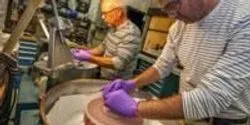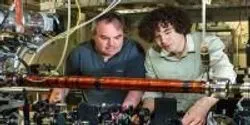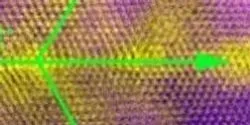News

Growing up in a household of artists and engineers, Peter Thelin was destined for a career in which artistry mattered. Only for him, art has come in the form of manipulating the shapes, sizes and qualities of optics. And now, as one of the few remaining practitioners of hand-polishing optics, Thelin is passing his artistry along to the next generation of optics specialists.

Neural prosthetic devices implanted in the brain's movement center, the motor cortex, can allow patients with amputations or paralysis to control the movement of a robotic limb—one that can be either connected to or separate from the patient's own limb. However, current neuroprosthetics produce motion that is delayed and jerky—not the smooth and seemingly automatic gestures associated with natural movement. Now, by implanting neuroprosthetics in a part of the brain that controls not the movement directly but rather our intent to move, Caltech researchers have developed a way to produce more natural and fluid motions.

Scientists at McMaster University have discovered how to make adult sensory neurons from human patients simply by having them roll up their sleeve and providing a blood sample.

Officials from the city of Zhuhai, China, and the University of California, Davis, signed a memorandum of understanding on May 22 to establish the World Food Center-China.

















